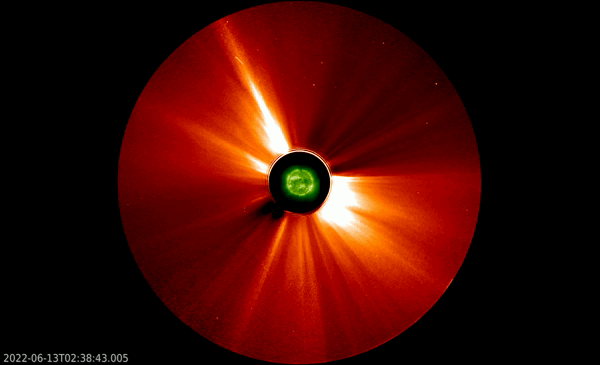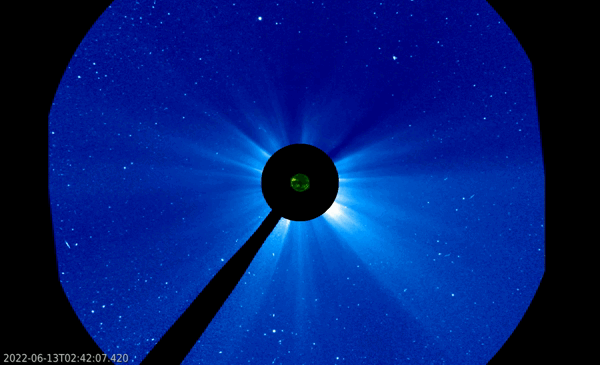NOAA 13032 produced an M3.4 flare peaking at 04:07UTC on 13 June. The image underneath was taken at 04:07UTC and compares the view in extreme ultraviolet (EUV, SDO/AIA 094) with a white light image (SDO/HMI), clearly confirming NOAA 13032 as the flare source, but with also some contributions from the two smaller regions NOAA 13033 and 13030, respectively to the east ("left") and west ("right") of NOAA 13032. The flare was a long duration event (LDE), lasting from 02:58 until 05:12UTC, or more than 2 hours. An enhancement in the greater than 10 MeV proton flux was observed and lasted for several days, however the values remained well below the alert threshold. The eruption was also noticeable on radio frequencies. At wavelengths near 10.7 cm where the daily solar radio flux is measured, a radio burst was recorded with peak values of 670 sfu (Solar Flux Unit, 1 sfu = 10-22 W / m2 Hz) above the pre-burst background. This qualifies the eruption as a Tenflare, i.e. a solar flare accompanied by a 10 cm radio noise burst of intensity at least double that of the pre-flare 10 cm background flux (in this case, around 130 sfu).
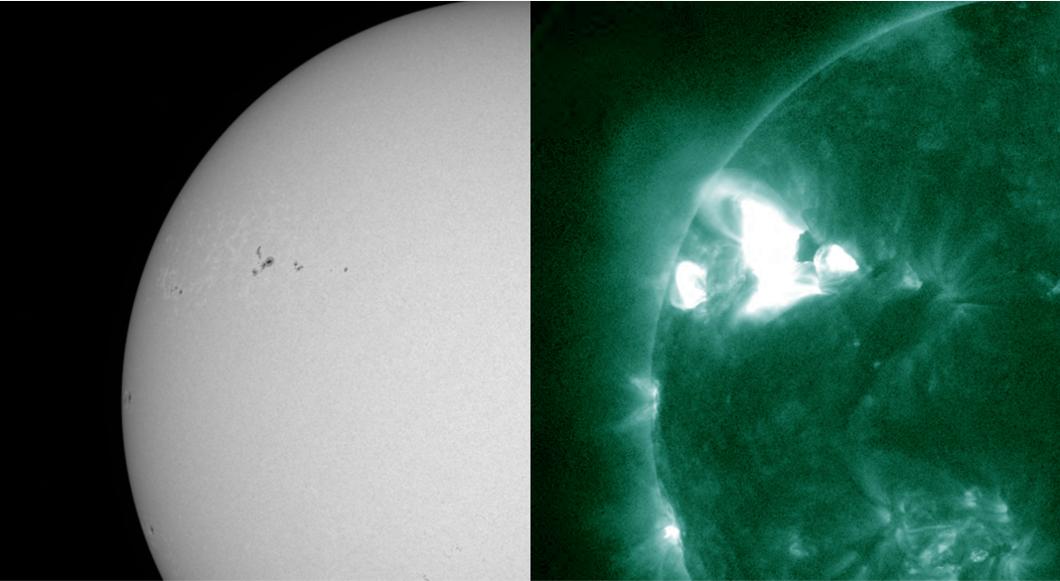
The imagery below compares the view in EUV between SDO/AIA 094 and STEREO-A/EUVI 195, and were both taken at 04:05UTC. Whereas AIA 094 better shows the extent and intensity of the flare at multi-million degrees, EUVI 195 shows the event at "cooler" temperatures around 1.5 million degrees, highlighting the post-flare coronal loops as well as local areas of coronal dimming (the relatively short-lived areas of darkening). STEREO-A is trailing Earth (and thus SDO) by 28 degrees, and thus had a better view on the eruption site.
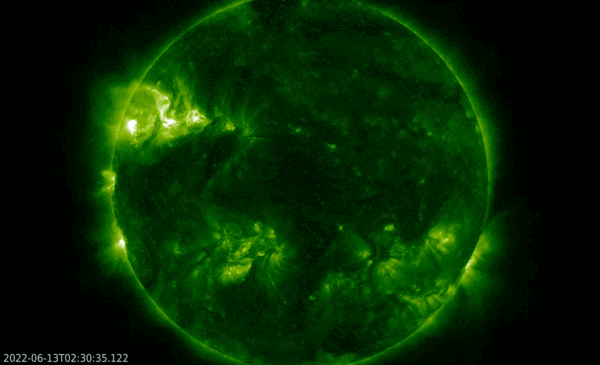
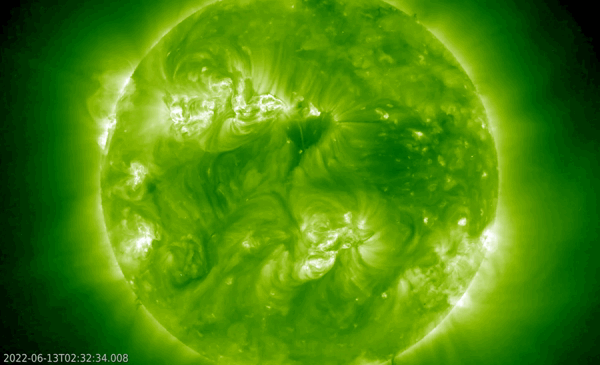
Based then on the above observations, it was no surprize that a coronal mass ejection (CME) was recorded by the various coronagraphs (image), and that the bulk of this CME was directed behind the Earth. Both STEREO-A/COR2 (top) as SOHO/LASCO C3 (bottom) showed this CME had a weak earth-directed component, and indeed, around 04:00UTC on 15 June, a small and brief disturbance was recorded in the solar wind parameters. Kp reached minor storm levels, the preliminary Dst index reached a meager -30 nT which is on the borderline between quiet conditions and a weak storm (see https://www.stce.be/educational/classification for more info on these geomagnetic indices). Of course, nothing more could be expected from this glancing blow.
